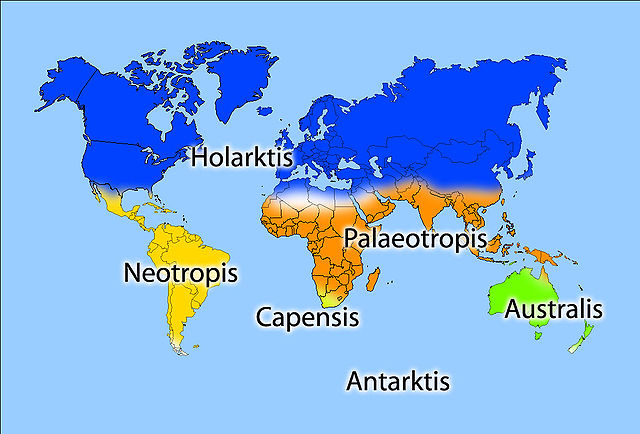Phytogeography or botanical geography is the branch of biogeography that is concerned with the geographic distribution of plant species and their influence on the earth's surface. Phytogeography is concerned with all aspects of plant distribution, from the controls on the distribution of individual species ranges to the factors that govern the composition of entire communities and floras. Geobotany, by contrast, focuses on the geographic space's influence on plants.
The basic data element of phytogeography are specimen records. These are collected individual plants like this one, a Cinnamon Fern, collected in the Great Smoky Mountains of North Carolina.
An 1814 self-portrait in Paris of Alexander von Humboldt. Humboldt is often referred to as the "father of phytogeography".
Good (1947) floristic kingdoms
Biogeography is the study of the distribution of species and ecosystems in geographic space and through geological time. Organisms and biological communities often vary in a regular fashion along geographic gradients of latitude, elevation, isolation and habitat area. Phytogeography is the branch of biogeography that studies the distribution of plants. Zoogeography is the branch that studies distribution of animals. Mycogeography is the branch that studies distribution of fungi, such as mushrooms.
Frontispiece to Alfred Russel Wallace's book The Geographical Distribution of Animals
Biologist Edward O. Wilson, coauthored The Theory of Island Biogeography, which helped in stimulating much research on this topic in the late 20th and 21st. centuries.





